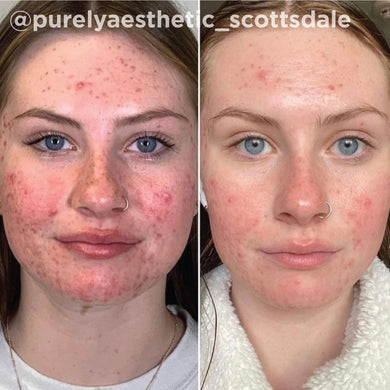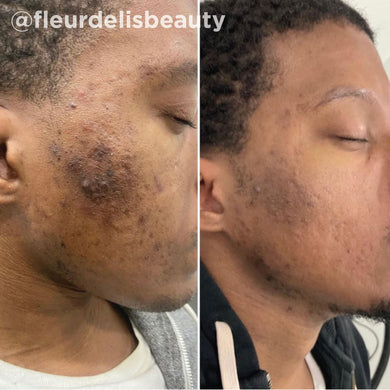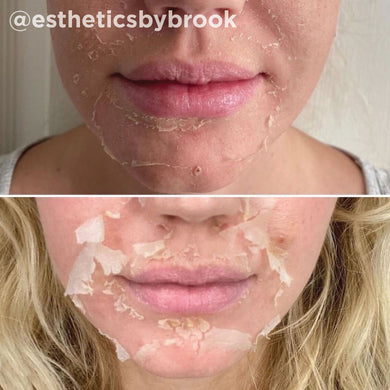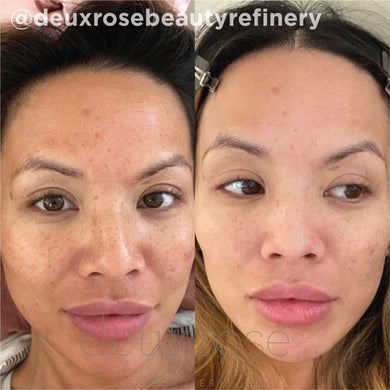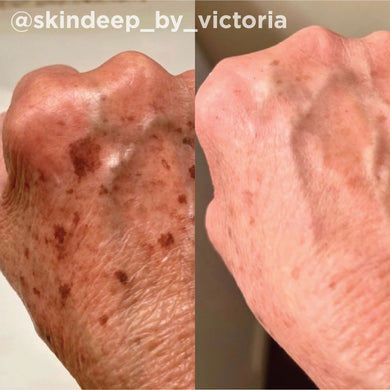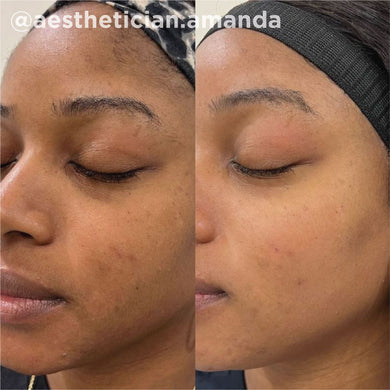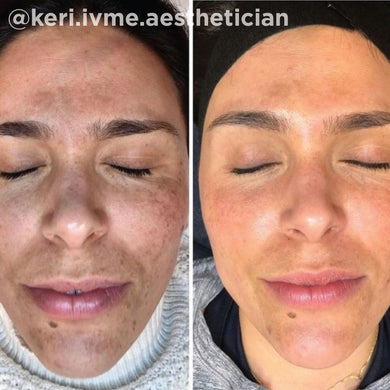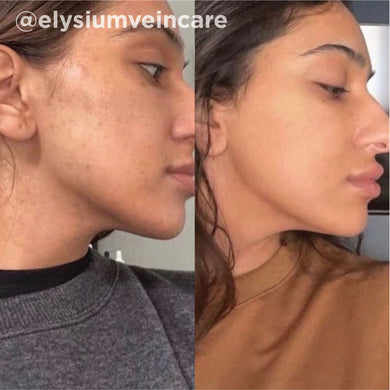What Is Retinol?
There’s no question that retinol is a must for anyone who wants younger, fresher, youth-boosted skin with fewer wrinkles, fewer dark spots, and an out-of-this-world glow. But, there are tons of questions about how it works and what skin concerns it will respond best to. From pros and cons to wrinkles and acne, here’s your must-have professional guide to Tretinoin, Tretinoin creams, retinoic acid and retinols (we recommend adding this to your bookmarks, stat).
But first, a look back at the history of Tretinoin (retinoic acid)
While retinol is said to have been around since ancient Egypt, it’s legacy in dermatology and topical skincare started in the middle of the 20th century. A dermatology study done in 1943 used retinoids to treat acne vulgaris. Tretinoin was patented in 1957, and was approved for dermatological use in 1962. By 1968, extensive studies proved that Retinoic Acid was an effective anti-acne treatment—inspiring Johnson & Johnson to begin running its own clinical trials of Tretinoin as an acne treatment. Tretinoin cream was first sold under the brand name Retin-A®: While it was prescribed to help clear acne, patients being treated with Retin-A® reported added skin benefits including smoother skin and skin that looked younger overall. Based on these client reports, Tretinoin slowly rose to fame as an anti-aging treatment.
Tretinoin, Retinoic Acid, retinoids, retinals, and retinol: what’s the difference?
Tretinoin and Retinoic Acid are the same ingredient, just with a different name. Tretinoin is only available via a prescription from your doctor or dermatologist because it is the most potent form of this Vitamin A derivative. Retinals and retinols are also Vitamin A derivatives that are sold over the counter as treatment serums and creams. Retinals and retinols are effective treating wrinkles and acne, however, they don’t work as quickly as Tretinoin. Why? Because retinals and retinols have to be converted by the skin into Retinoic Acid before they can be efficacious, whereas Tretinoin is already Retinoic Acid and isn’t slowed or weakened by the skin’s conversion process. It’s this difference in speed and strength that gives Tretinoin status as a drug and why it must be prescribed, whereas retinals and retinols can be purchased without a prescription. And lastly, retinoids simply refers to the family of all Vitamin A products.
The pros and cons of Tretinoin
As much love as Retin-A® received for delivering younger-looking skin, it wasn’t without pain points. Reported side effects included redness, itching, dryness, and burning. More intense reports detailed darkening or lightening of skin. Over time, skincare technology has been developed to ease the intensity of these reactions, and medical professionals can prescribe a complete skincare regimen that helps keep skin hydrated and protected. Doctors and dermatologists are essential in helping prevent these side effects (or correct them), and symptoms should dissipate over time as skin adjusts to the intensity of the treatment. If you’re concerned about tolerance, you can start patients on a low-strength Tretinoin cream to help mitigate any potential side effects, like prescription only VI Derm Retinoic Serum with 0.1% Tretinoin.
How does Tretinoin work?
Tretinoin works by speeding up skin’s natural cell turnover rate, (aka, how quickly your skin renews). Think of cell turnover as skin’s natural way of exfoliating itself: old cells are naturally shed from your skin’s surface to make way for newer, plumper, fresher cells to rise to the top.
Teenage and twenty-something skin has a rapid renewal rate. But as we age, this process slows and results in various undesirable skin concerns including wrinkles, dullness, and discoloration (aka, dark spots). Tretinoin encourages skin to renew at a faster rate, much like it did when you were in your teens, and this helps skin look smoother, less wrinkled, and more even in tone.
How Retinoic Acid helps fade dark spots
Also known as hyperpigmentation, dark spots are some of the most stubborn signs of aging and can contribute to the look of aged skin as much as a wrinkle. A Tretinoin cream encourages cell renewal and the sloughing of surface, or epidermal cells. By sloughing off dull and discolored surface cells, the visible pigmentation is minimized and skin looks more even toned. Retinoic Acid can also help decrease the amount of melanin, which is especially helpful in targeting dark spots that are triggered by excess melanin production in response to overstimulation by persistent UV damage.
Available through a prescription only, VI Derm Retinoic Serum with 0.1% Tretinoin is an incredible treatment for patients who are struggling with stubborn dark spots. It contains fast-acting, prescription-grade 0.1% Tretinoin (pure Retinoic Acid) plus Vitamin C—a proven skin brightener—to diffuse dark spots, and Vitamin E – a nourishing skin hydrator to minimize redness and irritation. To amp up brightening results, pair Retinoic Serum with prescription Skin Lightening Complex 4% Hydroquinone – which also includes Kojic Acid and Licorice Root – for dramatic and rapid brightening results. Our paraben-free Retinoic Serum delivers dermatologist-grade results, and the elegant formula feels and wears comfortably as part of almost any skincare regimen.
When used consistently and in combination with SPF, Tretinoin before and after photos show that dark spots should begin to fade within 3-4 months of treatment.
How Tretinoin helps clear acne and acne scars
Tretinoin is proven to help clear blackheads and whiteheads and can be effective in clearing inflammatory acne (pimples that are painful, red, and swollen). Tretinoin helps address some of acne’s biggest triggers: dead skin cells that clog pores, bacteria, and excess oil production. Tretinoin’s ability to stimulate cell renewal helps clear away dead skin cells so they won’t clog pores. Tretinoin can also help regulate overproduction of oil (oil often acts as a glue for dead skin cells, bonding them to skin and enhancing their pore-clogging ability). Tretinoin encourages quicker cell turnover which helps open the pores, and this can help release bad bacteria that’s known to incite acne.
It’s this same cell renewal process that helps minimize the intensity of acne scars. By encouraging newer and plumper skin cells to the surface, Tretinoin can help scars look smoother and less deep. And, Tretinoin before and after photos show that continued use can keep the look of even deep acne scars at bay for the long-run.
Treating acne and acne scars with a Tretinoin cream can be a delicate balance due to its potential to cause dryness and irritation. A skincare professional can help you design a skincare program that mitigates Tretinoin side effects like dryness while helping patients clear acne. Or, you can opt to utilize Tretinoin products that also contain hydrating ingredients like Vitamin E to minimize irritation, like VI Derm Retinoic Serum.
How Tretinoin helps minimize wrinkles
Tretinoin does more than just speed surface cell turnover. It also helps increase collagen production, and collagen production is essential to smooth, firm, and taught skin. By increasing collagen production, tretinoin can work as a preventative wrinkle treatment, considering the loss of collagen is one factor that contributes to wrinkle formation. When combined with Tretinoin’s ability to encourage surface cell turnover, which also helps rid skin of dulling cells that can intensify the look of wrinkles, it’s an incredible all-around anti-aging treatment. Tretinoin before and after photos show results on wrinkles in around 3-4 weeks.
What’s the best way to introduce Tretinoin cream into your skincare regimen?
When it comes to introducing Tretinoin into your skincare regimen, follow this advice: go low and go slow. This simply means first utilizing a low dosage, and slowly adding Retinoic Acid into your skincare routine by applying every other night or just 2 times a week until skin becomes more tolerant. Some respond better to a 0.05% Tretinoin cream first, and can then graduate to a 0.1% Tretinoin cream like VI Derm Retinoic Serum. If you’d like to start with 0.1% Tretinoin cream like VI Derm Retinoic Serum, apply to your face every other night for around 1 month, or until your skin adjusts. You can slowly start applying to your neck, around 2-3 times a week.
There are ways to offset potential irritation, redness, and itching that can be experienced when you first start using a Tretinoin cream. You can start with a nighttime application of Tretinoin cream, like VI Derm Retinoic Serum, along with a recovery balm, like VI Derm Post-Treatment Repair Cream. Or, you can apply your recovery balm, like VI Derm Post-Treatment Repair Cream in the morning to aid in soothing, recovery, and skin repair. VI Derm Post-Treatment Repair Cream was developed to optimize skin recovery by instantly reducing any redness and irritation, and is incredibly effective at neutralizing potential Tretinoin side effects. It also prevents water loss in the skin, helping prevent the dryness (which can trigger itching and irritation) that is sometimes triggered by a Tretinoin cream. Always consult with your dermatologist to ensure the right treatment regimen for you.
https://pubmed.ncbi.nlm.nih.gov/26969582/
https://www.ncbi.nlm.nih.gov/pmc/articles/PMC2699641/
https://money.cnn.com/magazines/moneymag/moneymag_archive/1989/04/01/85047/index.htm
https://www.mayoclinic.org/drugs-supplements/tretinoin-topical-route/side-effects/drg-20066521
